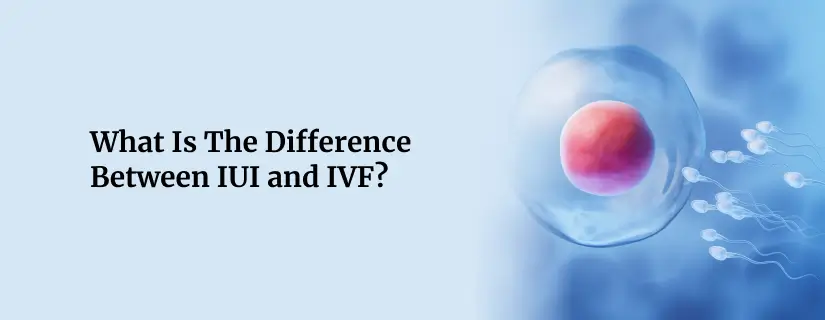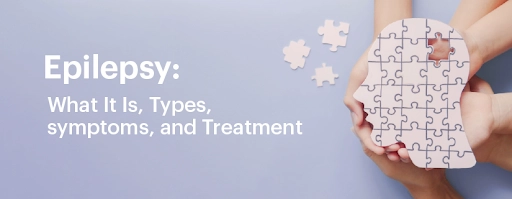-
Doctors
-
Specialities & Treatments
Centre of Excellence
Specialties
Treatments and Procedures
Hospitals & Directions HyderabadCARE Hospitals, Banjara Hills CARE Outpatient Centre, Banjara Hills CARE Hospitals, HITEC City CARE Hospitals, Nampally Gurunanak CARE Hospitals, Musheerabad CARE Hospitals Outpatient Centre, HITEC City CARE Hospitals, Malakpet
HyderabadCARE Hospitals, Banjara Hills CARE Outpatient Centre, Banjara Hills CARE Hospitals, HITEC City CARE Hospitals, Nampally Gurunanak CARE Hospitals, Musheerabad CARE Hospitals Outpatient Centre, HITEC City CARE Hospitals, Malakpet Raipur
Raipur
 Bhubaneswar
Bhubaneswar Visakhapatnam
Visakhapatnam
 Nagpur
Nagpur
 Indore
Indore
 Chh. Sambhajinagar
Chh. SambhajinagarClinics & Medical Centers
Book an AppointmentContact Us
Online Lab Reports
Book an Appointment
Consult Super-Specialist Doctors at CARE Hospitals
Fainting Vs Seizure: Understand the Difference
Updated on 30 September 2024

Have you ever witnessed someone suddenly collapse or experience uncontrolled shaking? These alarming symptoms can be signs of fainting (passing out) or seizures, two distinct medical events that often cause confusion. Understanding the difference between fainting and seizures is crucial for providing appropriate help and recognising when medical attention is necessary. This knowledge can significantly affect how quickly and effectively a person receives care during these frightening moments.
This article explores the key differences between passing out vs seizure, shedding light on their unique characteristics and causes. We'll delve into the specific symptoms that set passing out apart from seizures, helping you recognise the signs of each condition. Additionally, we'll discuss the underlying mechanisms that lead to these events, their potential triggers, and the appropriate responses for each situation.
Fainting and seizures: what are they?
Fainting and seizures are two distinct medical events that can cause a loss of consciousness. Despite this shared characteristic, they have different causes and symptoms. Understanding the difference between fainting and seizures is crucial for providing appropriate care and recognising when medical attention is necessary.
Fainting (Syncope)
Fainting, or syncope, is defined as a sudden loss of consciousness. It is due to a temporary decrease in blood flow to the brain. This reduction in blood flow can be triggered by various factors, including:
- Dehydration
- Low blood pressure
- Anxiety
- Standing up too quickly
- Heart problems
Unlike seizures, fainting is not associated with electrical activity in the brain. However, it can sometimes be mistaken for a seizure, especially if the person experiences jerking movements or twitching as they lose consciousness.
The most common symptoms of syncope include:
- Blacking out
- Feeling lightheaded
- Falling for no apparent reason
- Feeling dizzy or drowsy
- Fainting, which is more common after eating or exercising
- Feeling weak or unsteady when standing
- Vision changes, e.g. seeing spots or having tunnel vision
- Headaches
Seizures
It is a sudden, uncontrolled electrical disturbance in the brain. This electrical disruption causes a temporary change in the brain's function, leading to various symptoms, including:
- Loss of consciousness
- Convulsions or jerking movements
- Loss of bladder or bowel control
- Tongue biting
- Confusion
- Difficulty speaking
- Sensory disturbances, such as flashing lights or strange smells
The type & severity of symptoms will vary and depend on the specific type of seizure and the area of the brain affected.
Seizures vs. fainting: key differences
While both seizures and fainting can cause a loss of consciousness, they are distinct medical events with different underlying causes and symptoms. Understanding these differences is crucial for providing appropriate care and recognising when medical attention is necessary.
Fainting (syncope) and seizures are often confused due to their shared characteristic of sudden loss of consciousness, but they are very different medical events. Fainting occurs due to a temporary reduction in blood flow to the brain, often triggered by dehydration or standing up too quickly, and typically results in a brief loss of consciousness with rapid recovery. In contrast, seizures are caused by abnormal electrical activity in the brain and can involve convulsions, sensory disturbances, and confusion, with a longer recovery time. Seizures, particularly in epilepsy, may recur without proper treatment. Understanding these key differences helps ensure timely medical intervention and appropriate care. Convulsive syncope, which involves muscle jerks during fainting, can sometimes resemble seizures, but it’s distinct and does not involve brain electrical disturbances like seizures do. It's essential to consult a doctor if someone experiences either to identify potential underlying health concerns, such as heart issues or neurological conditions.
Underlying Causes
Seizures result from a sudden discharge of electrical activity in the brain. This electrical disruption causes a temporary change in the brain's function, leading to various symptoms. On the other hand, fainting (syncope) occurs when not enough blood reaches the brain, often due to a loss of blood pressure.
Main Symptoms
Seizures can manifest in many ways but often include convulsions, repetitive movements, jerks, and twitches. People experiencing a seizure may also shout out. In contrast, the defining symptom of fainting is losing consciousness. However, fainting can sometimes be mistaken for a seizure, especially if the person experiences jerking movements or twitching as they lose consciousness.
Diagnostic Tests
An electroencephalogram (EEG) test can help differentiate between seizures and fainting. In the case of seizures, the EEG may show 'epileptiform' brain activity. For fainting, the EEG typically shows normal brain activity.
Duration and Recovery
Seizures typically last up to a few minutes, and the person may be confused or disoriented afterwards. Fainting episodes are usually shorter, lasting only a few seconds, and the person usually recovers quickly and feels well afterwards.
Recurrence and Treatment
Seizures may occur repeatedly, especially if they're a sign of epilepsy. If epilepsy is diagnosed, treatment is usually required for many years. Fainting is less likely to recur unless the underlying cause is not addressed. The treatment for fainting depends on the cause. For many cases, small lifestyle changes are enough, but fainting can also suggest a heart condition that needs treatment.
Additional Considerations
It's important to note that convulsive syncope is not a form of seizure. Instead, it's when someone's muscles briefly shake or jerk while unconscious, which can occur when there is reduced blood flow to the brain. This is different from a syncope-induced seizure, also known as an "anoxic-epileptic" seizure.
Summarising the differences:
|
Feature |
Seizures |
Fainting |
|---|---|---|
|
Cause |
Electrical disturbance in the brain |
Decreased blood flow to the brain |
|
Symptoms |
Loss of consciousness, convulsions, confusion, sensory disturbances |
Loss of consciousness, weakness, dizziness, sweating |
|
Onset |
Sudden, without warning |
It may be preceded by warning signs, such as dizziness or nausea |
|
Duration |
Typically, it lasts up to a few minutes |
Typically, it lasts for a few seconds |
|
Recovery |
May be confused or disoriented after |
Usually recovers quickly and feels well |
|
Recurrence |
It may occur repeatedly, especially if it's a sign of epilepsy |
Unlikely to recur unless the underlying cause is not addressed |
Conclusion
Recognising the difference between passing out and a seizure can have a significant effect on how quickly and effectively a person receives care during these alarming situations. Both conditions can cause a loss of consciousness but have distinct causes, symptoms, and treatments. Understanding these key differences enables people to respond more confidently in emergencies and provide appropriate help.
While fainting results from a temporary decrease in blood flow to the brain, seizures stem from sudden electrical disturbances in the brain. This distinction influences the duration, recovery, and likelihood of recurrence for each condition. Anyone who experiences either a seizure or fainting episode should consult a doctor to determine the underlying cause and get proper care. This knowledge can make a real difference in ensuring the best possible outcome for the affected individual.
To Book an Appointment, call:
ENQUIRY FORM
SELECT CATEGORIES
-
Neurosciences (16)
-
Neurology (37)
-
Neurosurgery (14)
-
Orthopaedics (48)
-
Oncology (33)
-
Obstetrics and gynecology (52)
-
Pulmonology (23)
-
Urology (20)
-
Nephrology (13)
-
Psychiatry (7)
-
Dietetics and Nutrition (111)
-
General Medicine (63)
-
Cardiac Sciences (32)
-
Vascular & Endovascular Surgery and Interventional Radiology (15)
-
Gastroenterology (46)
-
Endocrinology (23)
-
Plastic Surgery (10)
-
Critical Care Medicine (5)
-
COVID-19 (16)
-
Dermatology (16)
-
Emergency Care (1)
-
Ophthalmology (4)
-
Pediatrics (14)
-
Laparoscopic and Bariatric Surgery (8)
-
ENT (15)
-
Kidney Transplant (1)
-
Liver Transplantation and Hepatobiliary Surgery (5)
-
General Surgery (3)
-
Internal Medicine (5)
-
Medicine Information
Blood Clot in Brain: Types, Symptoms, Causes and Treatment
Winter Migraines: Symptoms, Causes and Treatment
YOU MAY ALSO LIKE
RECENT BLOGS
-

Preterm Birth (Premature Birth): Symptoms, Causes, Treatment and Prevention
13 May 2025
Read More
-

Rotablation Angioplasty: Benefits, Treatments, And Recovery Time
9 May 2025
Read More
-

What Is The Difference Between IUI and IVF?
9 May 2025
Read More
-

Venous Malformations: Causes, Symptoms, and Treatment
30 April 2025
Read More
-

Varicose Vein Foam Sclerotherapy: Treatment, Benefits, and Procedure
30 April 2025
Read More
-

Radiofrequency (RF) Ablation Treatment for Varicose Veins: Know More
30 April 2025
Read More
-

Varicose Vein Sclerotherapy: Treatment, Benefits, and Procedure
30 April 2025
Read More
-

Varicose Vein Endovenous Laser Ablation: Procedure, Benefits, Risks
30 April 2025
Read More
Have a Question?
If you cannot find answers to your queries, please fill out the enquiry form or call the number below. We will contact you shortly.




































.webp)